The Intel Core i9-7980XE and Core i9-7960X CPU Review Part 1: Workstation
by Ian Cutress on September 25, 2017 3:01 AM ESTBenchmarking Performance: SPECwpc v2.1
Anyone can run wPrime (why would you?) or Geekbench, but more often than not these pre-built synthetic tests are not representative of any user’s workload. This applies even more to professional environments or prosumer workloads, where time is money: if someone interested in hardware cannot pinpoint exactly how the new hardware is going to benefit them, that is $20 of billable time down the drain.
One of the difficulties of a benchmark reviewer is finding relevant benchmarks for the audience at hand. I’ve discussed what AnandTech is and our audience to several high profile software vendors who are in the business of supplying professional grade, critical programs that top technology companies use to produce the next $700 smartphone. These engineers are our readers, and it only seems best that we benchmark something that can assist them in accelerating our workflow. Unfortunately, the almost blanket response from these ISVs is negative, even if the request is for a limited software license in exchange for repeated discussion of the software on AnandTech (and third party benchmark data to assist their customers in hardware purchasing). My last discussions with two major ISVs led to a ‘interesting but we don’t see the value’ response and a ‘we’re doing our own in-house thing’ response respectively. No-one wants to know. Unless you work at one of these companies and want to get in touch.
The fall-back position in this case is to call on SPEC for their Workstation benchmark series. SPECwpc has existed in one form or another for several years, using pre-compiled binaries for a mix of medical, oil-and-gas, engineering, visualization and system level benchmarks. There are over 30 benchmarks, some running multiple copies to keep all the cores busy, and repeated runs offer very good consistency. A full run can take over six hours, making a sizeable increase to even our CPU workflow.
We’re reporting almost all of the subset scores in our benchmarking. Some tests require a GPU, and so we maintain the same RX 460 graphics card on each processor we test, along with the same screen resolution and driver. Ideally we would use professional graphics cards, like AMD’s FirePro range or NVIDIA’s Quadro range, however we currently use four identical RX 460 cards to keep the benchmarks on our test beds continually flowing, and sourcing four of the same pro card on long-term loan is actually fairly difficult.
Because SPECwpc takes so long and is fairly new, we only have results for a few processors so far. This should expand as we continue using this test. We’re likely to limit this test to HEDT processors and above, along with one or two mainstream processors (i7-K, Ryzen 7). For this review, out of the two Intel processors in the title, we only had time to run it on the Core i9-7980XE.
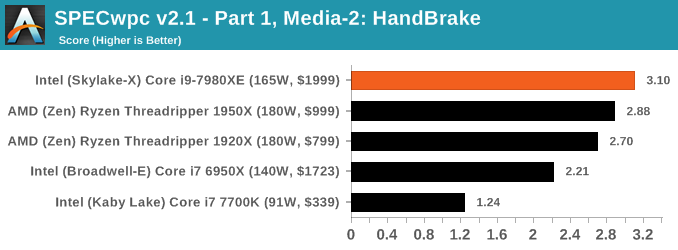
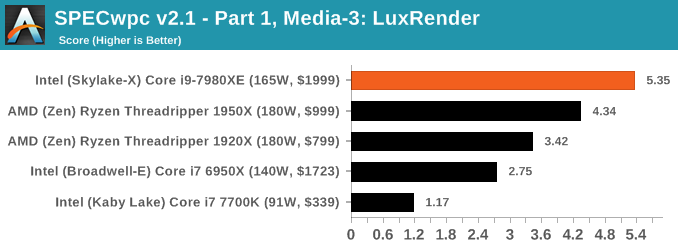
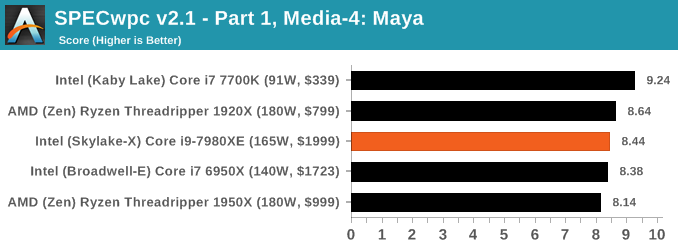
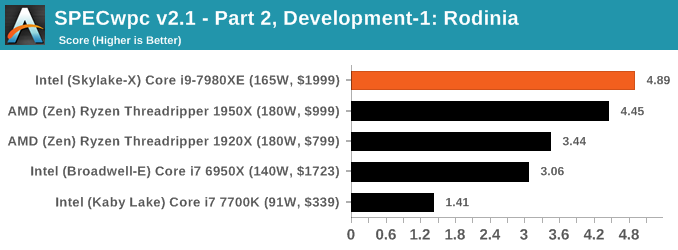
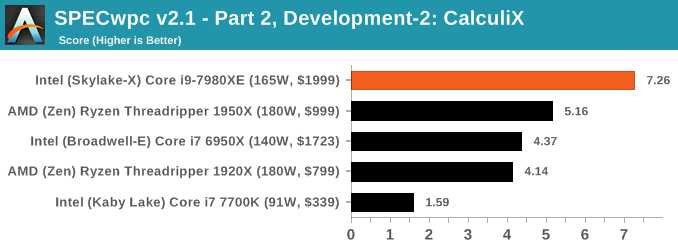
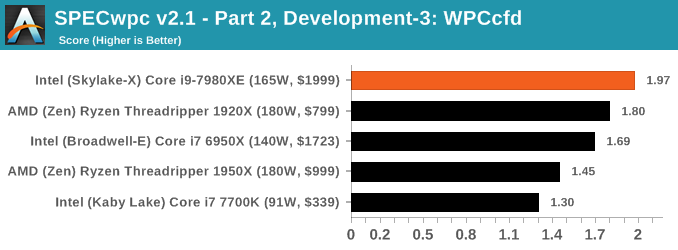
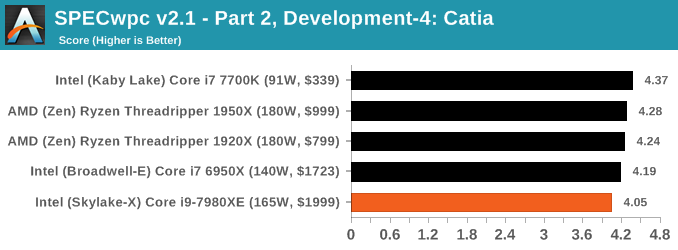
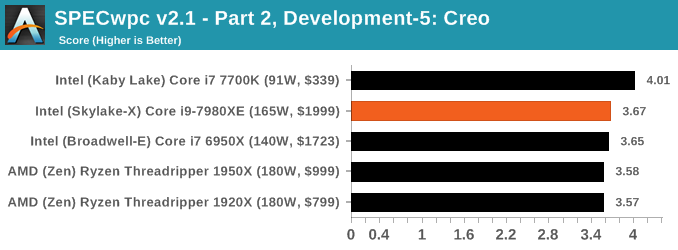
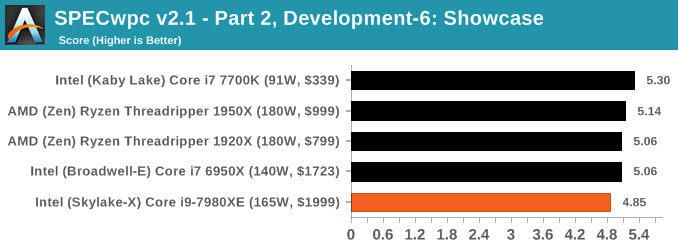
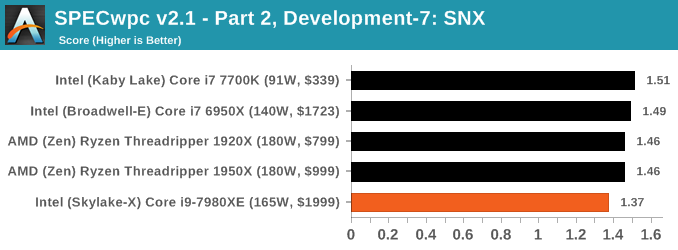

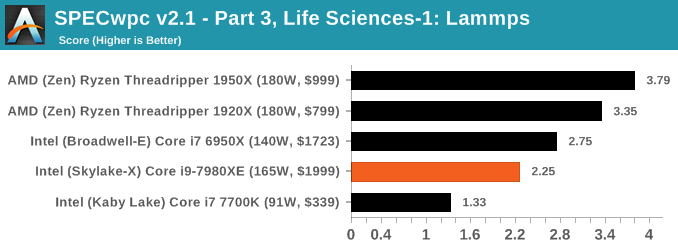

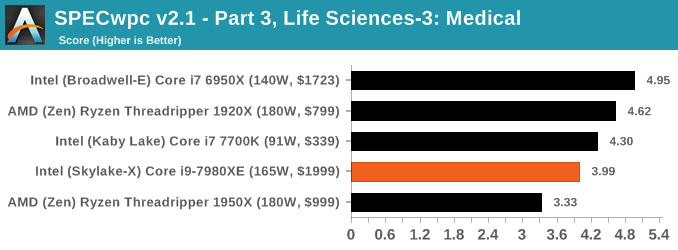
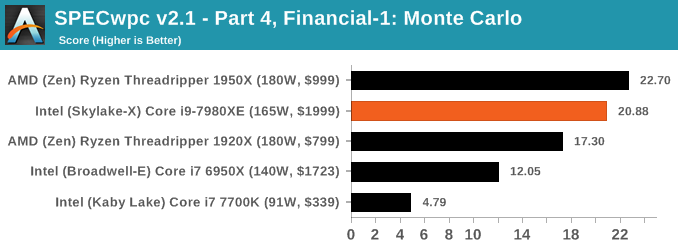
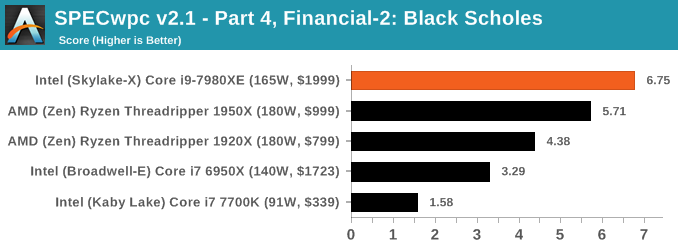

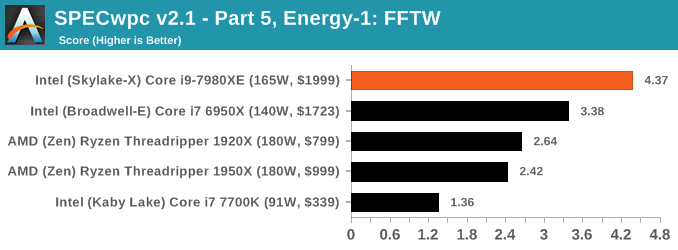
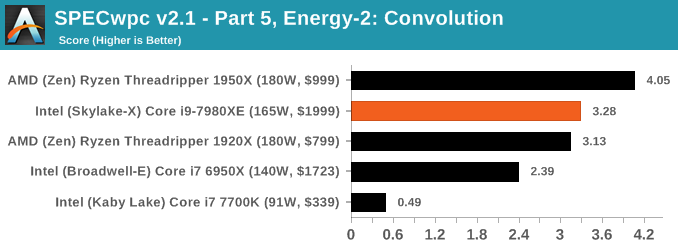
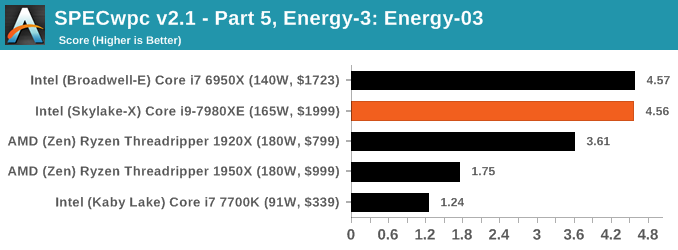

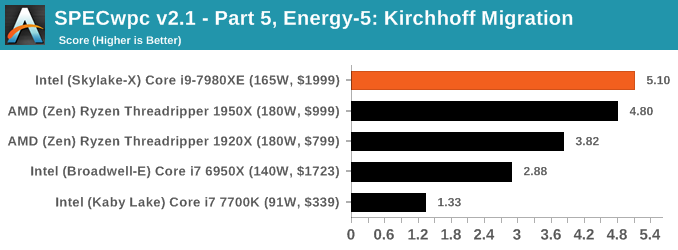
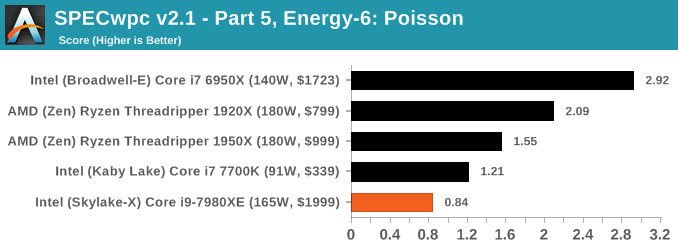
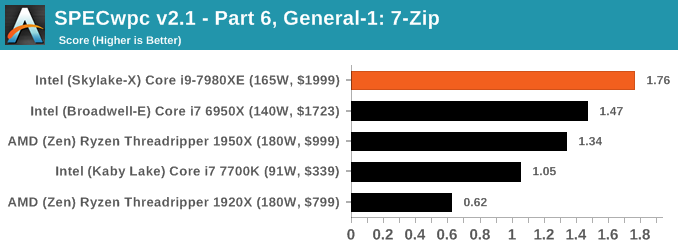
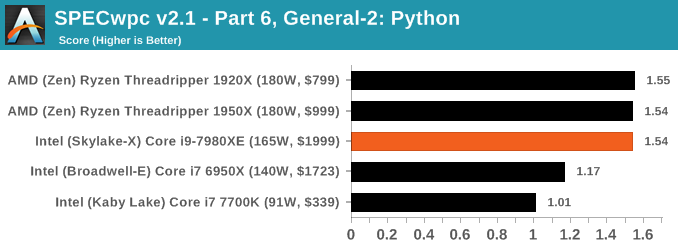











152 Comments
View All Comments
tamalero - Wednesday, September 27, 2017 - link
Hey guys, question.. Toms and others have mentioned that they HAD to put watercooling to keep this thing stable.Did the same happened to your sample? Wouldnt that increase the "cost of ownership" even more than the intel counterpart?
I mean, the mobo, the ram, the watercooling kit and then the hefty processor?
samer1970 - Wednesday, September 27, 2017 - link
Water cooling is for overclocking only ... you will be okay using 170 watt TDP rated air cooler if you dont oc.0ldman79 - Wednesday, September 27, 2017 - link
I'm going to grab another cup-o-coffee and read it again, but the performance per dollar, AMD costs about half as much as Intel for several comparable models, how does Intel have better performance per dollar on so many of those graphs?Admittedly my kids are driving me nuts and I've been reading this for two days now trying to finish...
silvertooth82 - Thursday, September 28, 2017 - link
if this is all true... let's say thanks to AMD for poking IntelAnnonymousCoward - Friday, September 29, 2017 - link
Very nice review. So compared to a 6700K/7700K, the 18-core beast is marginally slower in single-thread, and only 2-3x faster in multi-thread.I found the time difference when opening the big PDF to be the most interesting chart. 65W Ryzens take a noticable extra second.
Exceeding the published TDP sounds like lawsuit territory.
nufear - Monday, October 2, 2017 - link
Price for Intel Core i9-7980XE and Core i9-7960XMy opinion, I can not justify to spend extra $700~1k on these processors. The performances weren't that significant.
rwnrwnn7 - Wednesday, October 4, 2017 - link
AVX-512 - What software work with him?for what it used today?
rwnrwnn7 - Wednesday, October 4, 2017 - link
AVX-512 - What software work with him?for what it used today?
DoDidDont - Friday, October 27, 2017 - link
Would have been nice to see the Xeon Gold 6154 in the test. 18 cores / 36 threads and apparently an all core turbo of 3.7Ghz, plus the advantage of adding a second one on a dual socket Mobo.Planning a pair of 6154's on either an Asus WS C621E or a Supermicro X11DPG-QT and Quad GPU set up.
My 5 year old dual E5-2687w system scores 2298 in Cinebench R15, which has served me well and paid for itself countless times over, but having dual 6154's will bring a huge smile to the face for V-ray production rendering.
My alternative is to build two systems on the i9-7980XE, one for content creation, single CPU, single GPU, and the other as a GPU workhorse for V-ray RT, and Iray, single CPU, Quad GPU+ to call on when needed.
So the comparison would have been nice for the various tests performed.
sharath.naik - Sunday, December 3, 2017 - link
Isn't there supposed to be part 2!!!